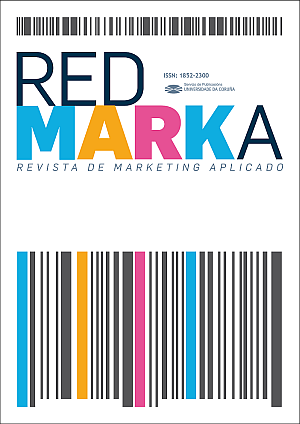Innovation as a component of corporate reputation. Analysis of the communication on innovation in the web content of the Spanish organizations with the best reputation
Main Article Content
Abstract
The main objective of this study is to help verify how organizations use their corporate websites as communication channels to manage and improve their reputation through innovation.The presence of information on innovation in the web content of the organizations with the best reputation is analyzed according to the ranking carried out by Merco (monitor of Spanish corporate reputation). To do this, a model is proposed to analyze the contents present in the corporate websites based on the indicators used by Merco to measure the reputation of organizations. In particular, the presence of information on the innovation indicator is identified, as well as its level of accessibility (depending on its location on the web: front page, specific tab, etc.).
The results of the work show that both the presence and the accessibility of information on the variables that make up the innovation is low, especially when compared with the results of other indicators of reputation with similar weight.
The model proposed in this paper is presented as a useful tool to identify opportunities to improve the management of communication of organizations based on the variables that make up the innovation indicator for the construction of an organization's reputation.
Keywords:
Downloads
Article Details
References
Baldarelli, M.G. y Gigli, S. (2014). Exploring the drivers of corporate reputation integrated with a corporate responsibility perspective: some reflections in theory and in praxis. Journal of Management and Governance, 18, 589-613.
Barnett, M.C. y Pallock T.G. (eds.) (2012). The Oxford handbook of corporate reputation. Oxford University Press.
Briones-Peñalver, A. J., Bernal-Conesa, J. A., & de Nieves-Nieto, C. (2017). Relaciones interorganizativas de la industria de defensa: su influencia en la innovación y cooperación y su efecto sobre la competitividad. GCG: Revista De Globalización, Competitividad & Gobernabilidad, 11(3), 20-37.
Carreras, E., Alloza, A., y Carreras, A. (2013). Reputación Corporativa. Madrid: LID Editorial.
Casado, A. M. (2013): La Gestión de la Reputación en España: Nuevas tendencias en las Direcciones de Comunicación. Miguel Hernández Communication Journal, 4, 90-111.
Chun, R. (2005). Corporate reputation: meaning and measurement. International Journal of Management Reviews, 7(2), 91-109.
Espino, L. E., García, B. J., y de Oliveira, E. (2013). Impacto de la innovación en la competitividad: caso de una pyme mexicana. International Council For Small Business. World Conference Proceedings, 1-25.
Fombrum, C.J. (1996). Reputation: Realizing Value from the Corporate Image. Boston: Harvard Business School Press.
Freeman, R.E. (2004). The stakeholder Approach Revisted. Journal for Business, Economics and Ethics (zfwu), 5(3), 228-241.
Gotsi, M. y Wilson, A. M. (2001). Corporate reputation: seeking a definition. Corporate Communications, 6(1), 24-30.
Grunig, J. E. (2011). Public relations and strategic management: Institutionalizing organization – public relationships in contemporary society. Central European Journal of Communication, 1, 11-31.
Jones, B., Temperley, J. y Lima, A. (2009). Corporate reputation in the era of Web 2.0: the case of Primark. Journal of Marketing Management, 25(9-10), 927-939.
Kobrak, C. (2013). The Concept of Reputation in Business History. Business History Review, 87, 763-786.
Leal-Rodríguez, A.L., Leal-Millán, A. y Ariza-Montes, A. (2016). El papel de la innovación verde en el equilibrio rentabilidad-sostenibilidad. Revista de Fomento Social, 71(281), 177-182.






